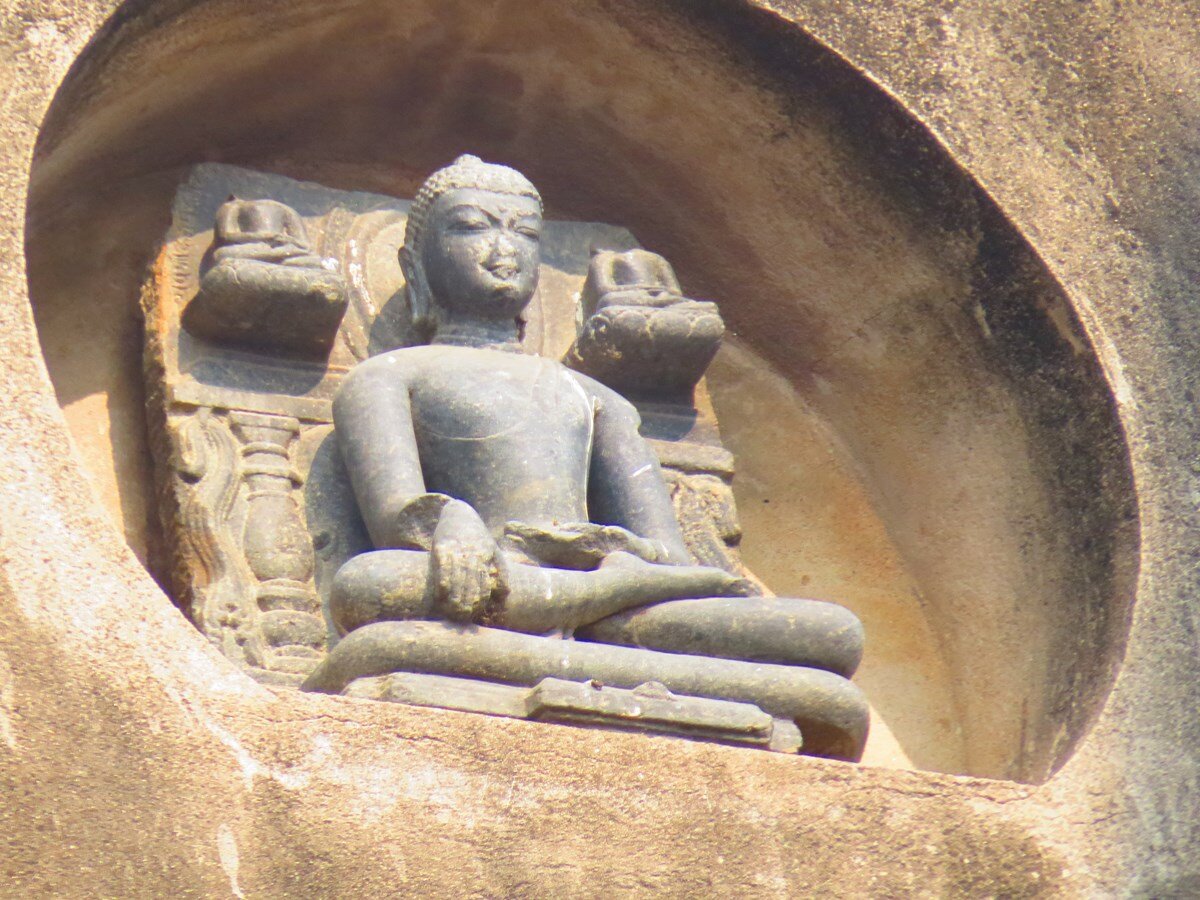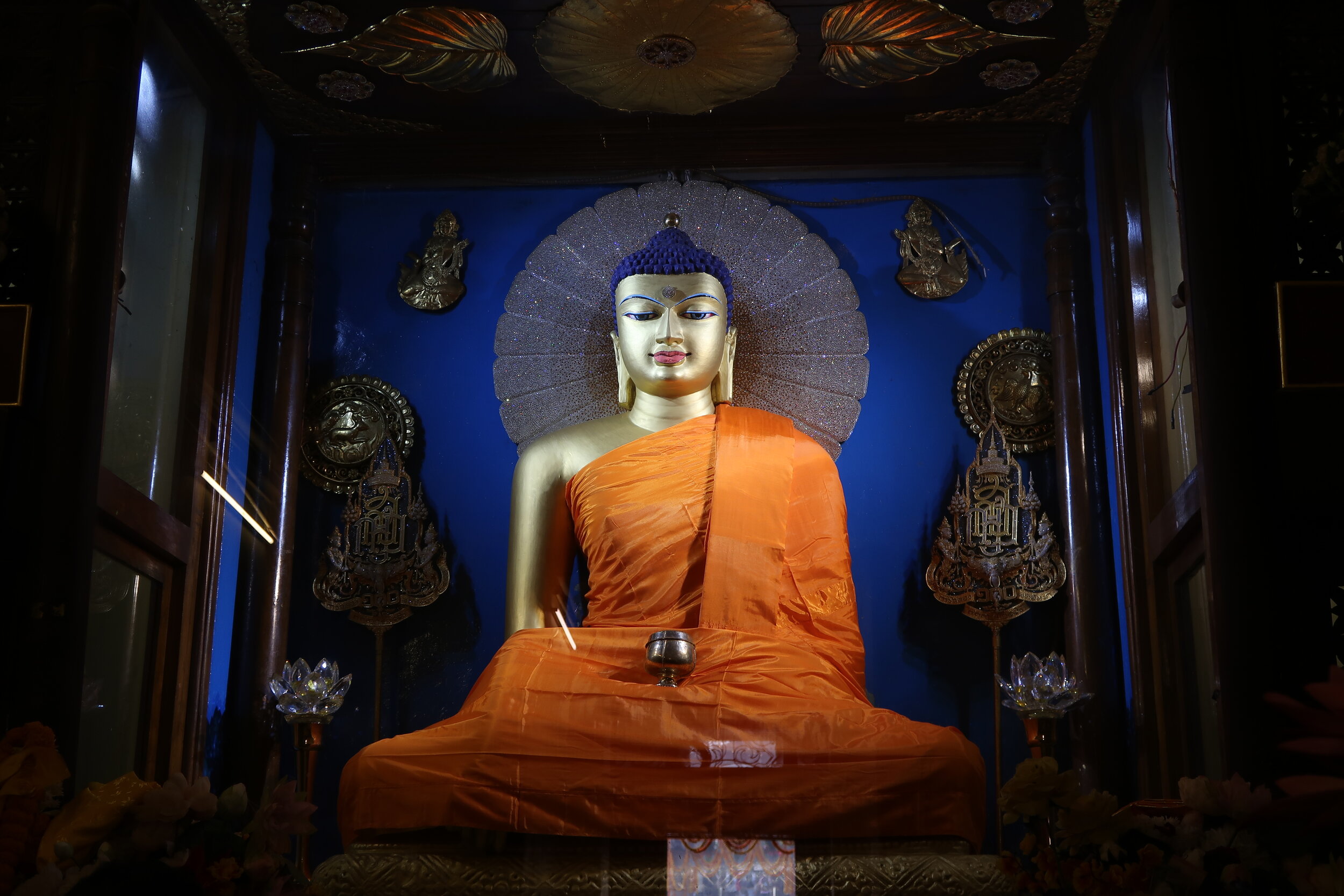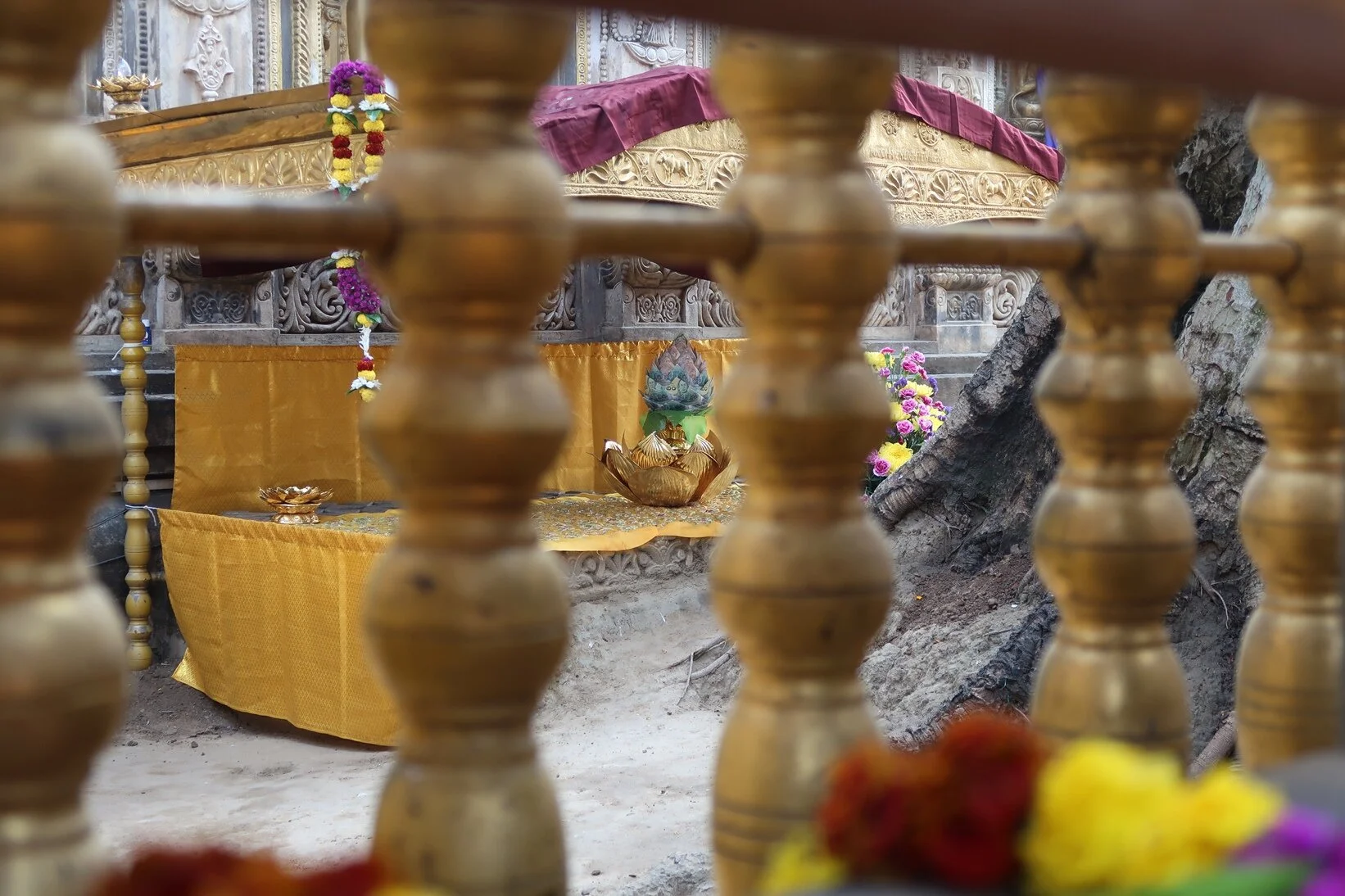
Bodh Gaya
Where the Tathagata awakened to the unexcelled right self-awakening

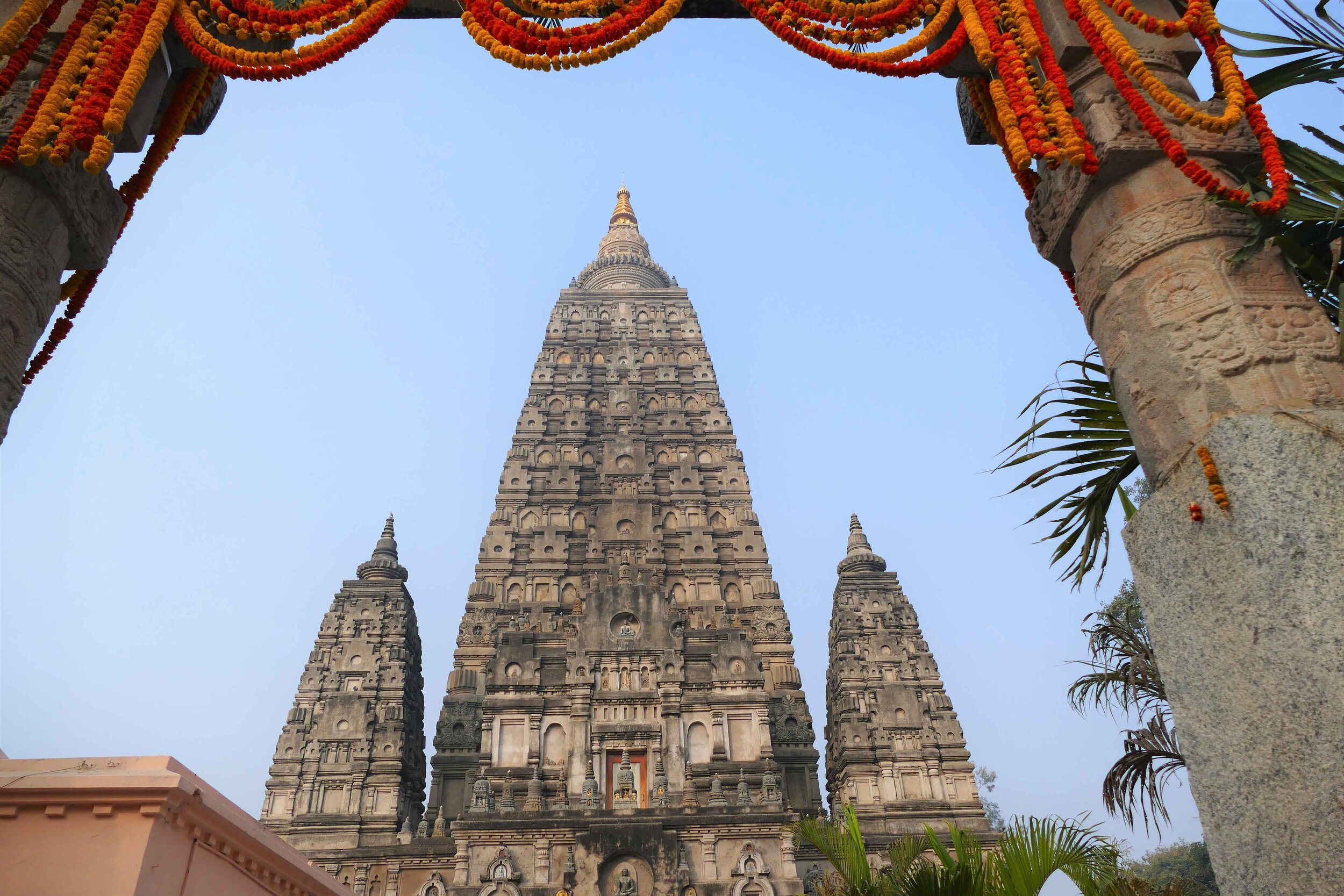
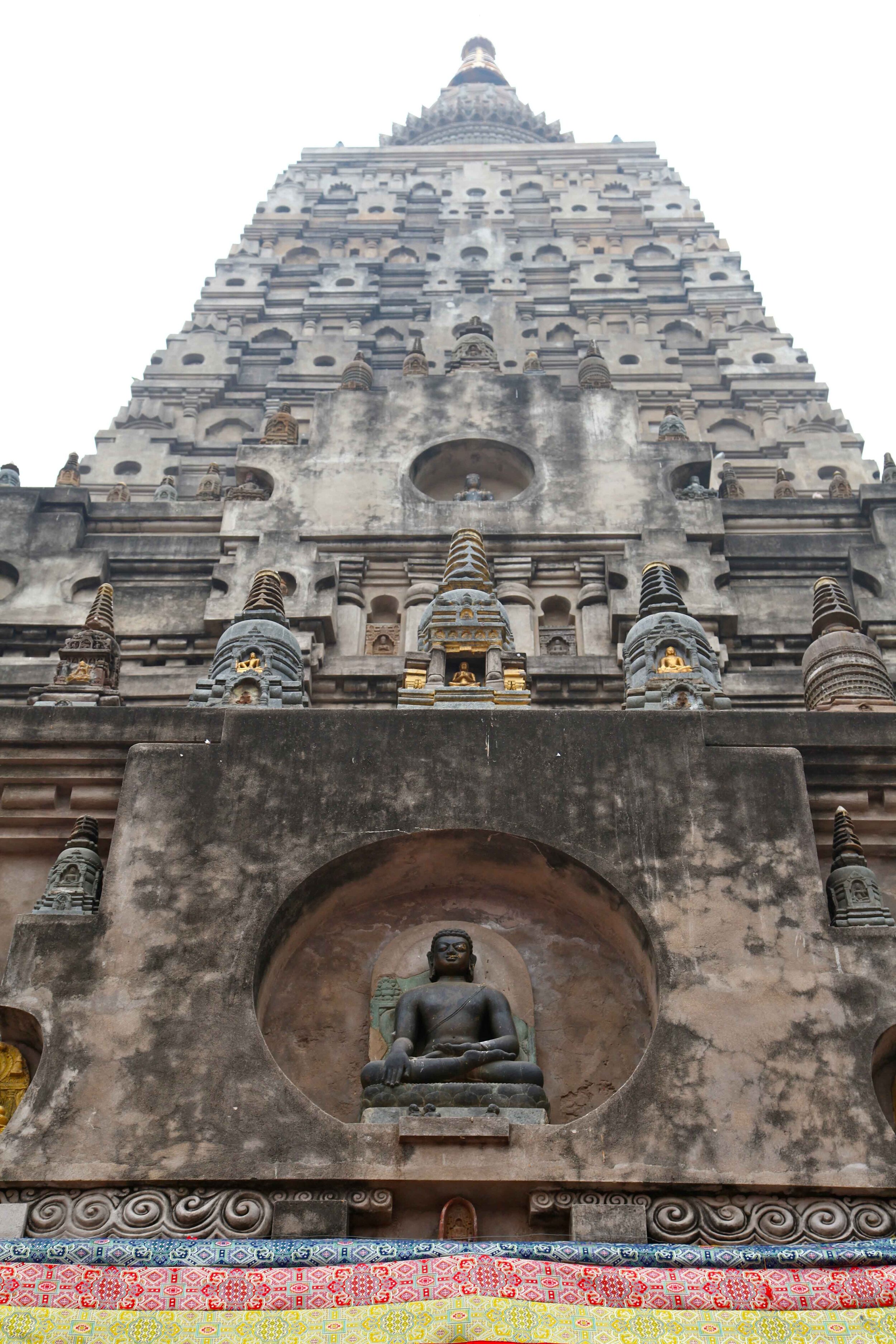

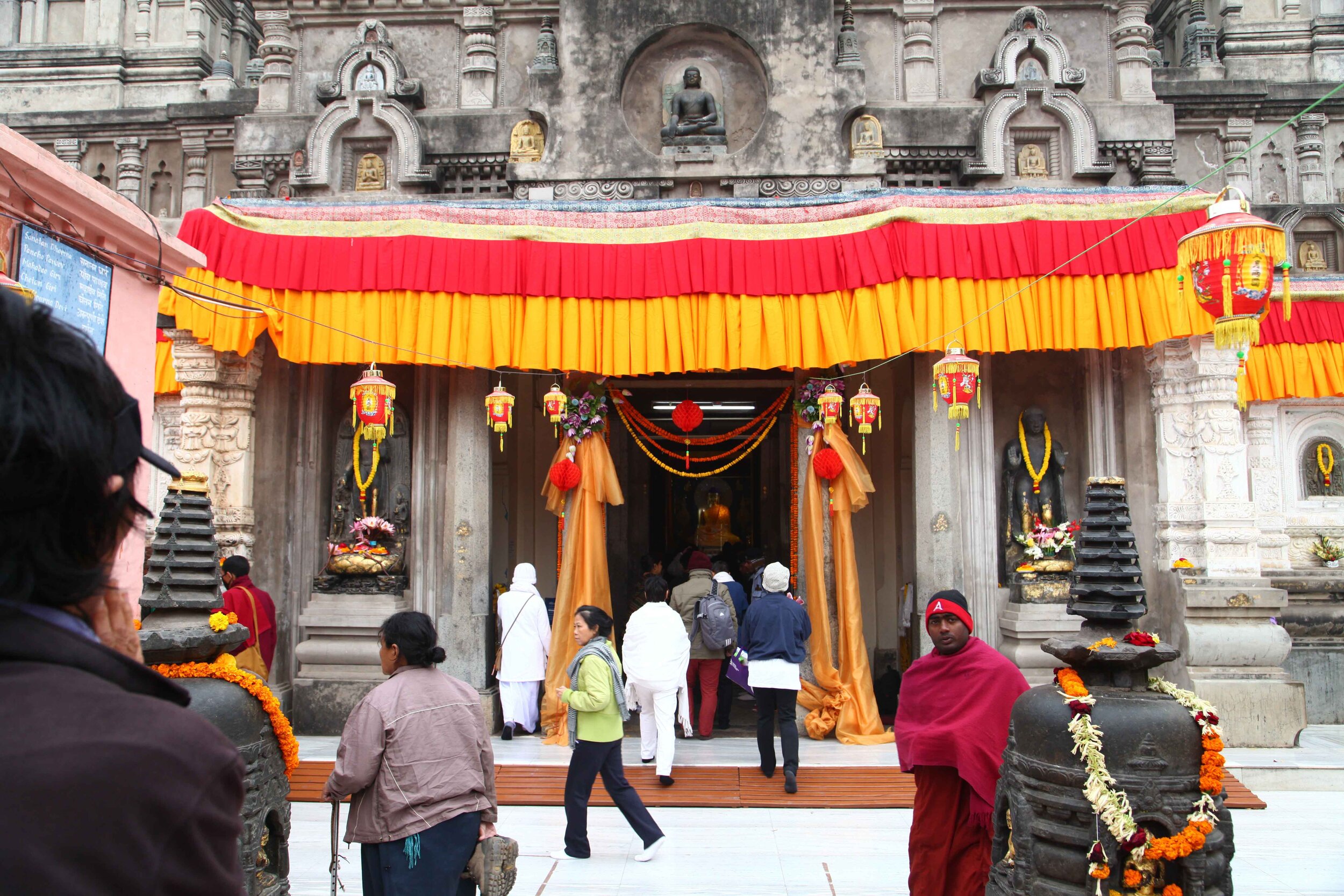
The main shrine hall
The main shrine hall or Sanctum on the ground floor is reached after passing through a vaulted passage, on both sides of which are stone staircases leading up to a smaller shrine hall on the first floor. On entering the Sanctum, one comes face to face with the great gilded image of the Buddha seated in the bhumiparsa mudra (earth-touching-posture). Just gazing at this magnificent image of our Lord Buddha will certainly evoke feelings of joy and reverence in the heart of a pilgrim. The highlight of the temple includes tall stone lotuses, figures of Buddha sitting in different postures on the walls, his footprint on the stones and the colossal golden Buddha in the sanctum sanctorium.
Bhumipharsa mudra (obscured by robe)
The Supreme Vow
The Bodhisatta went to the Bodhi tree and placed the bundles of grass on the ground to make a seat for himself, facing the east. As he sat down to meditate, he made a vow: “Gladly would I let the flesh and blood in my body dry up, leaving just the skin, tendons, and bones, but if I have not attained the unexcelled full awakening, I will not get up from this seat.”
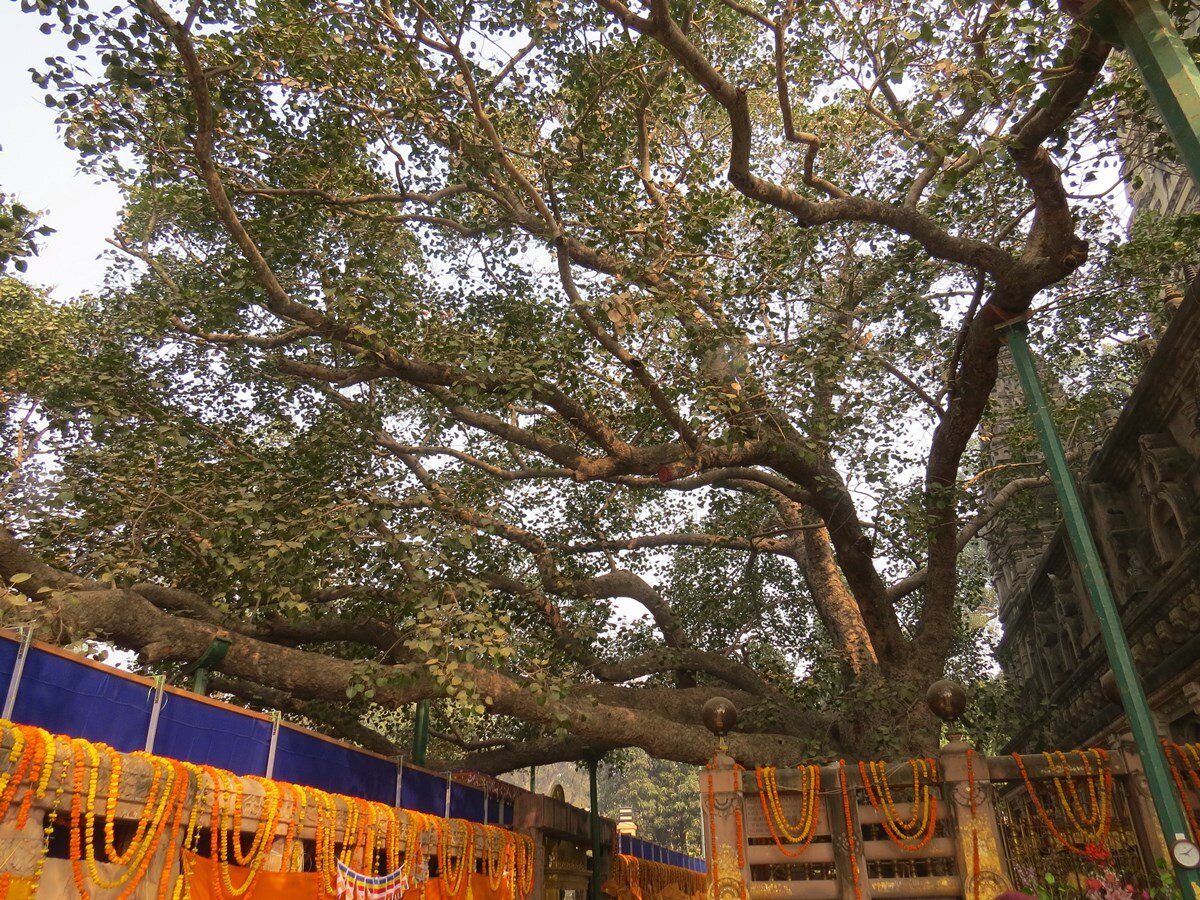
Bodhi Tree
The Bodhi tree under which the Buddha attained Supreme Enlightenment is behind the temple. It is a Pipal tree, also known as ‘assattha’ in Pali. It is said to have sprung up at the same time when the Buddha was born. Being the object of veneration of Buddhists, it naturally became the target of destruction by the enemies of Buddhism. The Bodhi tree was cut down and destroyed several times but was revived and replanted. The present Bodhi tree is at least 125+ years old now.
Approaching the tree, from circumambulating Maha Bodhi Temple in the clockwise direction.
Looking up directly.
On the other side
Pilgrims chanting or meditating. Silence is otherwise observed.
Pilgrims chanting or meditating. Silence is otherwise observed.
Pilgrims circumambulating. Note location of the tree is behind the Maha Bodhi Temple.
The Maha Bodhi Temple through the leaves. Steel structures prop up the tree branches.
Vajrasana or Diamond Throne
The Vajrasana is located right behind the Temple and underneath the Bodhi tree. It marks the actual spot where the Buddha attained Supreme Enlightenment. It is now marked by a red sandstone slab.
Pilgrims who visit this spot could spend some time in this conducive environment, to reflect on the virtues of the Buddha, to attain fullness of faith and calm, followed by mindfulness meditation to develop spiritual insight.
Māra’s Troops
At first, most of the devas came from their many realms to bless the Bodhisatta. Then, however, Vassavati Māra—realizing that if the Bodhisatta gained full awakening, he would lead many beings beyond the range of his power—rallied his troops to threaten him. The sky drew dark with thunder and lightning, a terrible storm whipped up huge waves in the ocean, and trees fell from the mountains. The other devas fled in fear, leaving the Bodhisatta to meditate steadfastly alone. Vassavati Māra transformed his appearance, giving himself a thousand heads and a thousand hands, holding many types of weapons. Riding on an elephant, Grimekhala, that was as tall as a mountain, he was surrounded by his troops that took the form of half human beings, half ferocious animals, leading the attack on the Bodhisatta.
The Throne
Māra shouted at the Bodhisatta with a clap of thunder: “What right do you have to be on my throne?” The Bodhisatta responded, “How is this your throne? It was created by my merit.” “How can you prove that?” Māra replied. The Bodhisatta touched the ground, saying, “May the Earth be my witness.”
Suddenly the Earth deva rose from the ground and squeezed from her hair an immense flood of water, symbolizing the merit developed by the Bodhisatta over many eons, washing away Māra’s troops just as a strong wind would blow away a cloud of dust. Grimekhala collapsed on his knees; Vassavati Māra returned to his original form and fled in defeat.
The Three Knowledges
After Māra left, the Bodhisatta gained awakening first by bringing his mind to the fourth jhāna—abandoning pleasure and pain, and experiencing purity of equanimity and mindfulness—and then by applying his concentrated mind to gain three knowledges.
In the first knowledge, gained in the first watch of the night, he saw his many past lifetimes, going back many hundreds of thousands of eons (pubbenivāsānussatiñāṇa).
In the second knowledge, gained in the second watch of the night, he saw how all beings die and are reborn in line with the skillful and unskillful actions they have performed under the power of right and wrong views (cutūpapāta-ñāṇa).
In the third knowledge, gained in the third watch of the night just before dawn, he realized the four noble truths— suffering, its cause, its cessation, and the path leading to its cessation—and completed the duties appropriate to each: comprehending suffering, abandoning its cause, realizing its cessation, and developing the path. With this knowledge, his mind was released from the effluent of sensuality, the effluent of becoming, and the effluent of ignorance. He realized that this was his last birth, and there was now for him no further becoming. This knowledge is called the knowledge of the ending of effluents (āsavakkhaya-ñāṇa).
Enlightenment
With this third knowledge, the Bodhisatta’s mind reached unbinding (nibbāna). Thereupon, he spoke these words of victory:
Through the round of many births I roamed
without reward,
without rest,
seeking the house-builder.
Painful is birth again & again.
House-builder, you’re seen!
You will not build a house again.
All your rafters broken,
the ridge pole dismantled,
immersed in dismantling,
the mind has attained to the end of craving.Prince Siddhattha, the Bodhisatta, was now the Buddha, at the age of thirty – five.
The Buddha’s Stay at Seven Places after Enlightenment
For the first seven weeks after awakening, the Buddha experienced the bliss of release, spending each week in a different location in the vicinity of the Bodhi tree.
First Week on the Throne
(Pallanka Sattaha)
The Buddha sat on the Diamond Throne for seven days in meditation, absorbed in the bliss of emancipation (Arahantship Fruition). At the end of seven days, he emerged from the absorption and contemplated on the Doctrine of Dependent Origination (Paticca Samuppada) the whole night.
The Animisilocana Cetiya is on the right.
Second week (Animisa Sattaha)
Throughout the second week, as a mark of gratitude to the Bodhi Tree for providing him shelter, the Buddha stood gazing at it without closing his eyes. On the spot where the Buddha stood, a shrine was erected by King Asoka. Called the Animisilocana Cetiya or “Unblenching Gaze” shrine, it is located on elevated ground within the courtyard in front of the Temple.
Entrance to Animisilocana Cetiya - the Bodhi tree is in front of the smaller pagoda of the Maha Bodhi Temple and obscured by the structure.
Third Week on the Walk (Cankama Sattaha)
The third week was spent on walking meditation along a ‘jewelled promenade or Cankama’ running from east to west between the Diamond Throne and the Animisilocana Cetiya.
The jewelled promenade is beneath the array of offerings. For alternative images, please refer to this google search instead.
Fourth Week in Jewelled House
(Ratanaghara Sattaha)
The Buddha spent the fourth week in the ‘Jewelled House’, reflecting on the Abhidhamma, which deals with absolute truths concerning mental and material processes. As he contemplated on the deep and profound doctrine of the Patthana or Conditional Relations, there arose great rapture in the Omniscient mind, which activated material processes in the body to emit rays of six colours – blue, gold, white, red, pink and a massive brightness of all these assorted colours. This spot is now marked by a small shrine within the compound to the north of the Cankama.
Fifth Week at Ajapala Nigrodha Tree (Ajapala Sattaha)
During the fifth week, the Buddha sat at the root of the Ajapala Banyan tree reflecting on the Dhamma and absorbed in the bliss of Phalasamapatti (Fruition of Arahantship).
He reflected that there was no one to whom he should pay respect, as there was now no higher being in the universe. But at the same time, he also reflected that people live in misery if they have no one or nothing to respect. So he decided to respect the Dhamma.
Māra’s Dejection and Daughters
During this period, Vassavati Māra appeared in the forest and sat beside the path, despondent that the Buddha was now beyond his power. Taking a stick in hand and drawing lines in the ground, he dejectedly thought of the reasons why the Buddha had defeated him. First he drew ten lines in the ground, standing for the ten perfections of generosity, virtue, renunciation, discernment, persistence, endurance, truth, determination, goodwill, and equanimity. Then he crossed these ten lines with six more, representing the six higher knowledges that came with the awakening: the ability to display supernatural powers, clair audience, the ability to read the minds of others, recollection of past lives, clairvoyance, and knowledge of the ending of the effluents.
Māra’s daughters — Craving, Discontent, and Passion — sensing their father’s sadness, went to him and volunteered to bind the Buddha and bring him under his power. They went to the Buddha and, bowing down to him, offered to lavish attention on him. He didn’t even glance at them. So they transformed themselves into many hundreds of different feminine forms, corresponding to the many varieties of male lust, each form vowing to lavish attention on the Buddha, but he didn’t even glance at them. So fi nally Māra’s daughters also surrendered, and Māra scolded them for their foolishness
Sixth Week at Mucalinda (Mucalinda Sattaha)
After seven days at the Ajapala Banyan tree, the Buddha moved to the Mucalinda (Barringtonia acutangula) tree, a short distance south of the Temple. There he sat for seven days at the root of the Mucalinda tree, absorbed in the bliss of Arahantship. At that time, there arose an untimely rainstorm and gloom for seven days. Mucalinda, serpent king of the lake, came out and used its coils to encircle the Buddha’s body and its hood to cover the Buddha’s head thereby protecting the Lord.
The site of this episode is at the Mucalinda pond, a short distance south of the Temple.
Seventh Week at Rajayatana Tree (Rajayatana Sattaha)
After seven days at the Mucalinda tree, the Buddha moved to the Rajayatana tree (Buchanania latifolia) near the Temple. Here he sat at the foot of the tree absorbed in the bliss of Arahantship for seven days.
Māra’s Request
Māra appeared once more to request that the Buddha enter total unbinding without teaching the Dhamma. The Buddha replied that he would not pass away into total unbinding until he had established his Dhamma, and his male and female followers were competent to teach the Dhamma in his place. So once again, Māra left.
Tapussa and Bhallika
On the last day of the week, two merchants named Tapussa and Bhallika, brothers traveling from a faraway region, led their caravan through the forest. Seeing the Buddha, they offered him his first meal at the end of the seven-week session and, before leaving, took refuge in the Buddha and the Dhamma.
The two merchant brothers were from Ukkala in Myanmar and offered the Buddha rice cakes and honey.
They became the first lay disciples and asked the Buddha for an object of worship. Thereupon the Buddha rubbed his head and presented them with eight hairs. The brothers returned to their native Myanmar with the precious relics, which were later enshrined by the king in the Shwedagon Pagoda in Yangon. The site of this episode is marked by a signboard just south of the temple.
Sahampati Brahmā
Then the Buddha returned to the banyan tree. He reflected that the Dhamma he had discovered was very profound and refined, hard for people to understand. If he were to teach with no one to understand him, his efforts would be in vain. So he inclined his mind against teaching. Sahampati Brahmā, sensing the Buddha’s thoughts, left his realm as quickly as a strong man would fl ex or extend his arm, and appeared in front of him. Kneeling down on one knee, he implored the Buddha to teach: There would be those with little dust in their eyes who would understand.
All kinds of Lotuses
The Buddha reflected, seeing that those he might teach were like four groups of lotuses: some standing high above the water, ready to bloom at the fi rst touch of the sun; some standing just above the water, blooming later; some standing at water level, blooming still later; and some staying under water, where they would become food for the fishes and turtles. Realizing that there would be those who would understand the Dhamma, he kindly accepted the invitation to teach.
The complex
The Mahabodhi temple is surrounded by small stupas, as well as the above landmarks.
The complex is open at all times, although the times of access is permissible by the tickets purchased.
The temple is sometimes visited by large groups of pilgrims from all over the world whose offerings are interesting to behold.


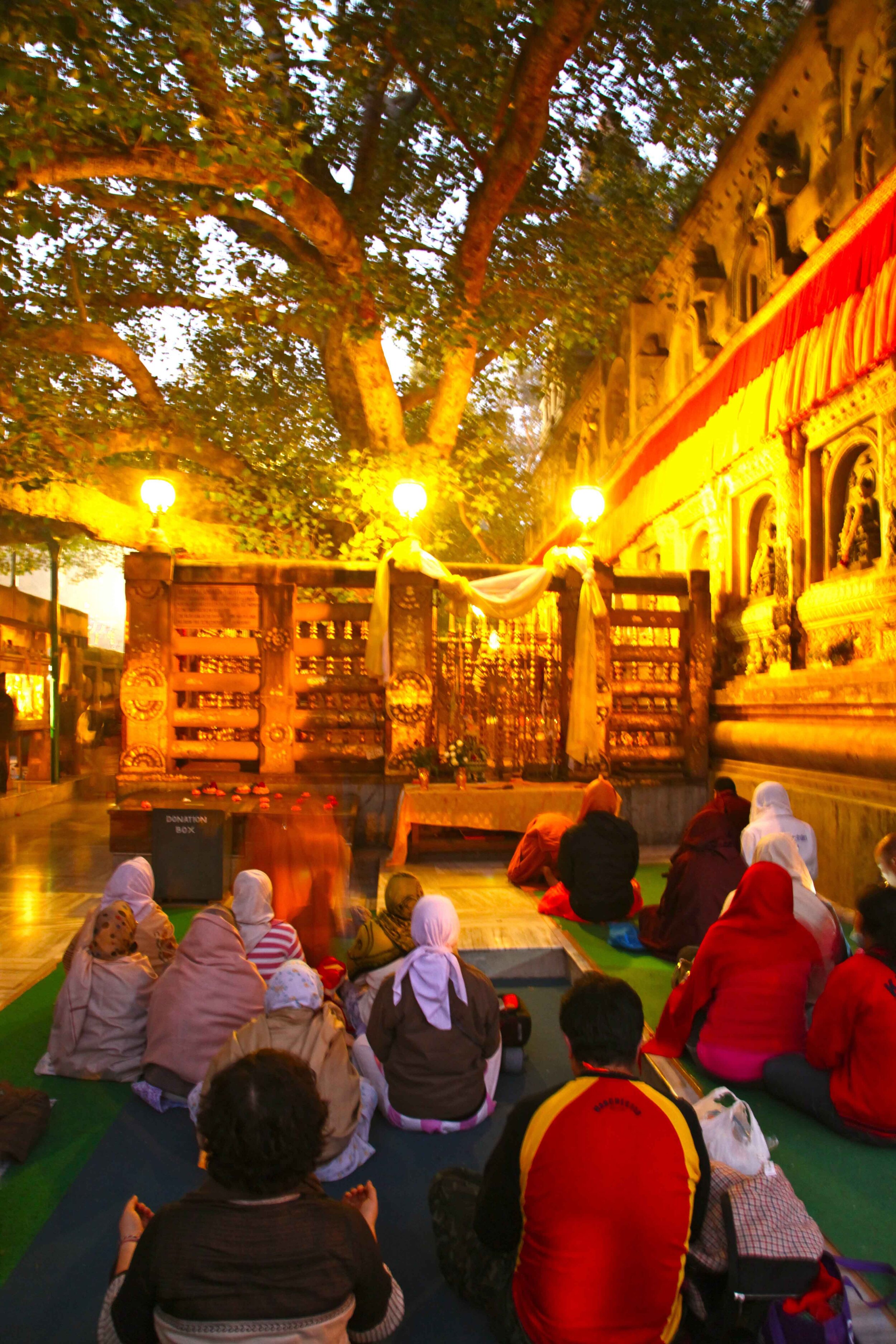



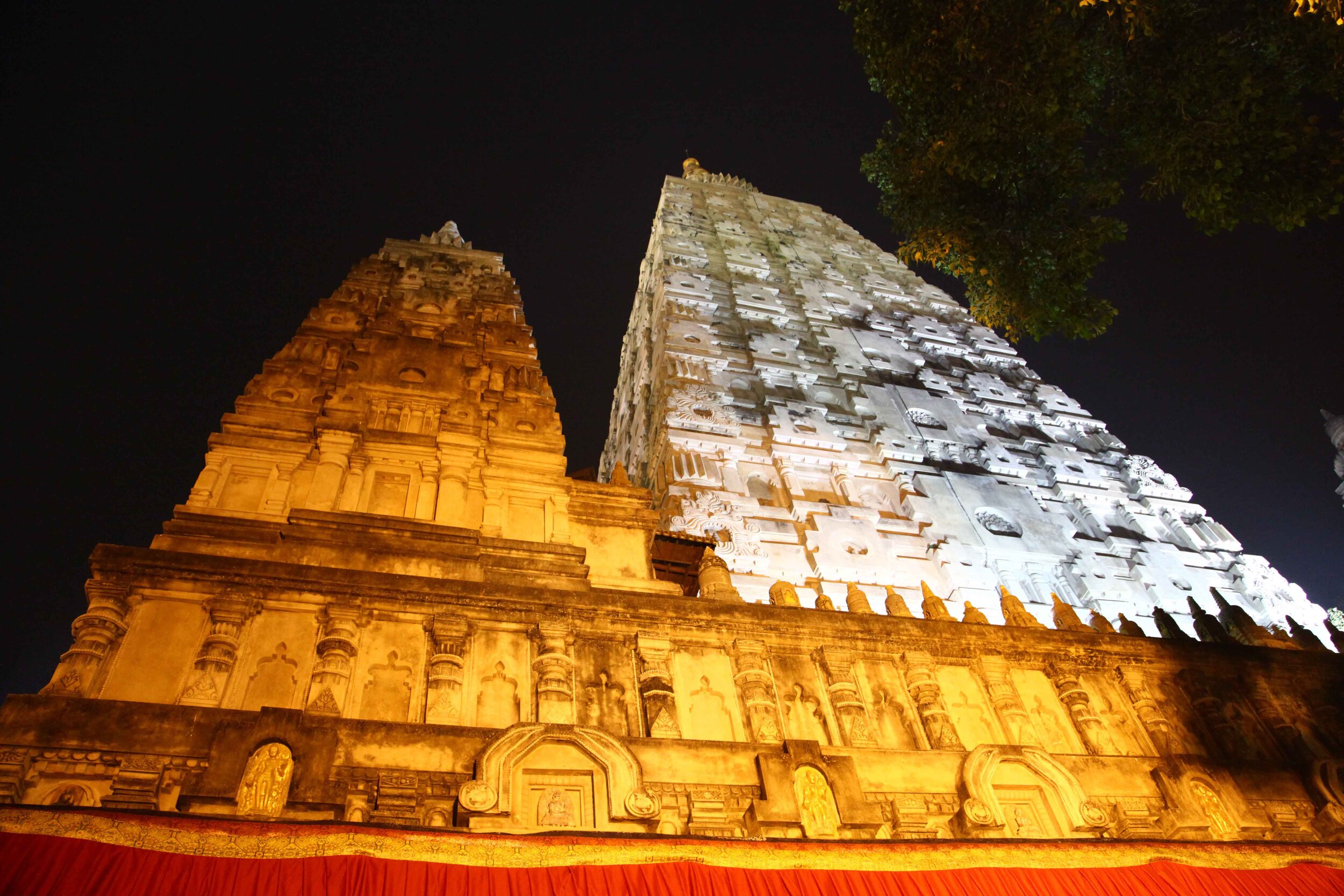







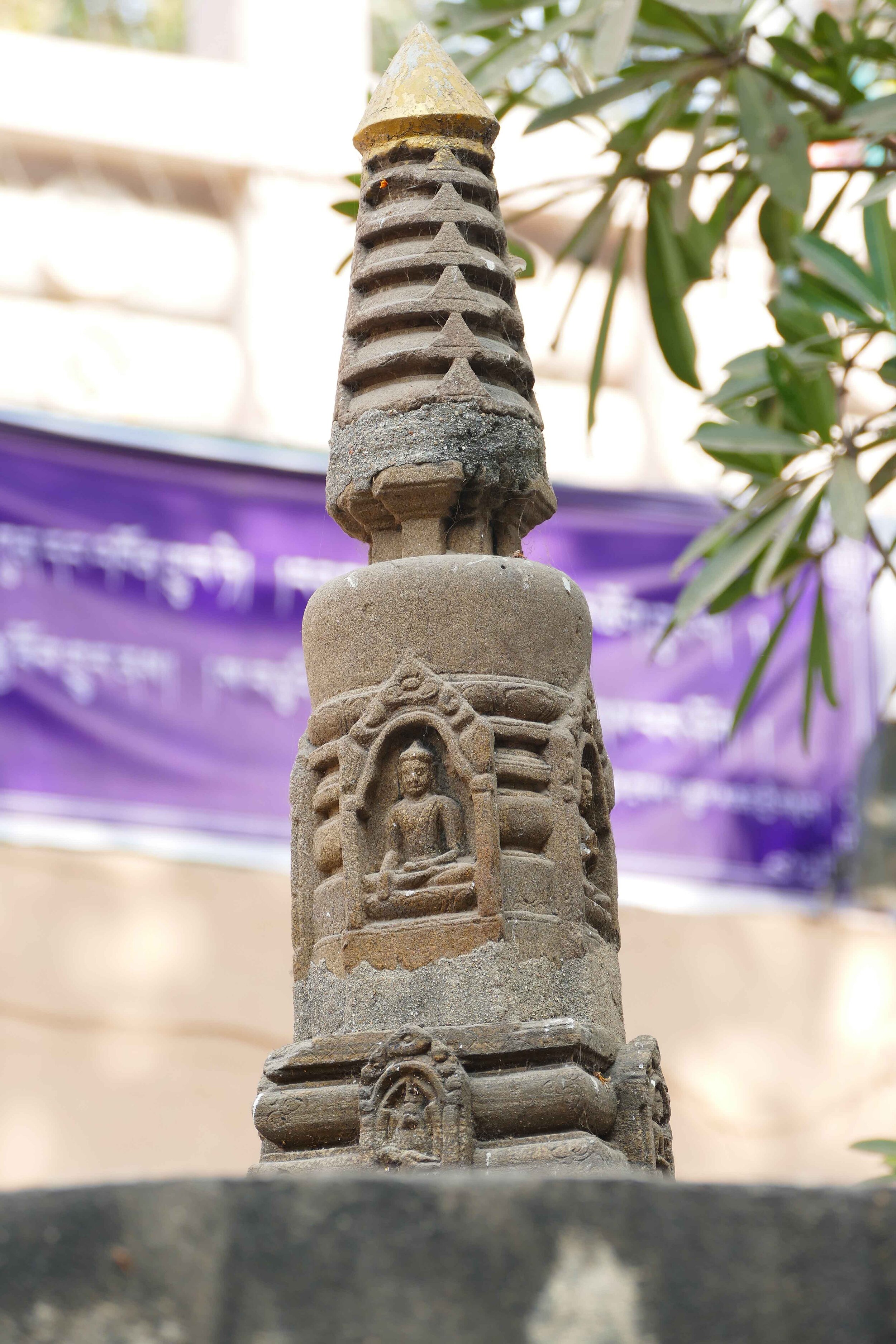


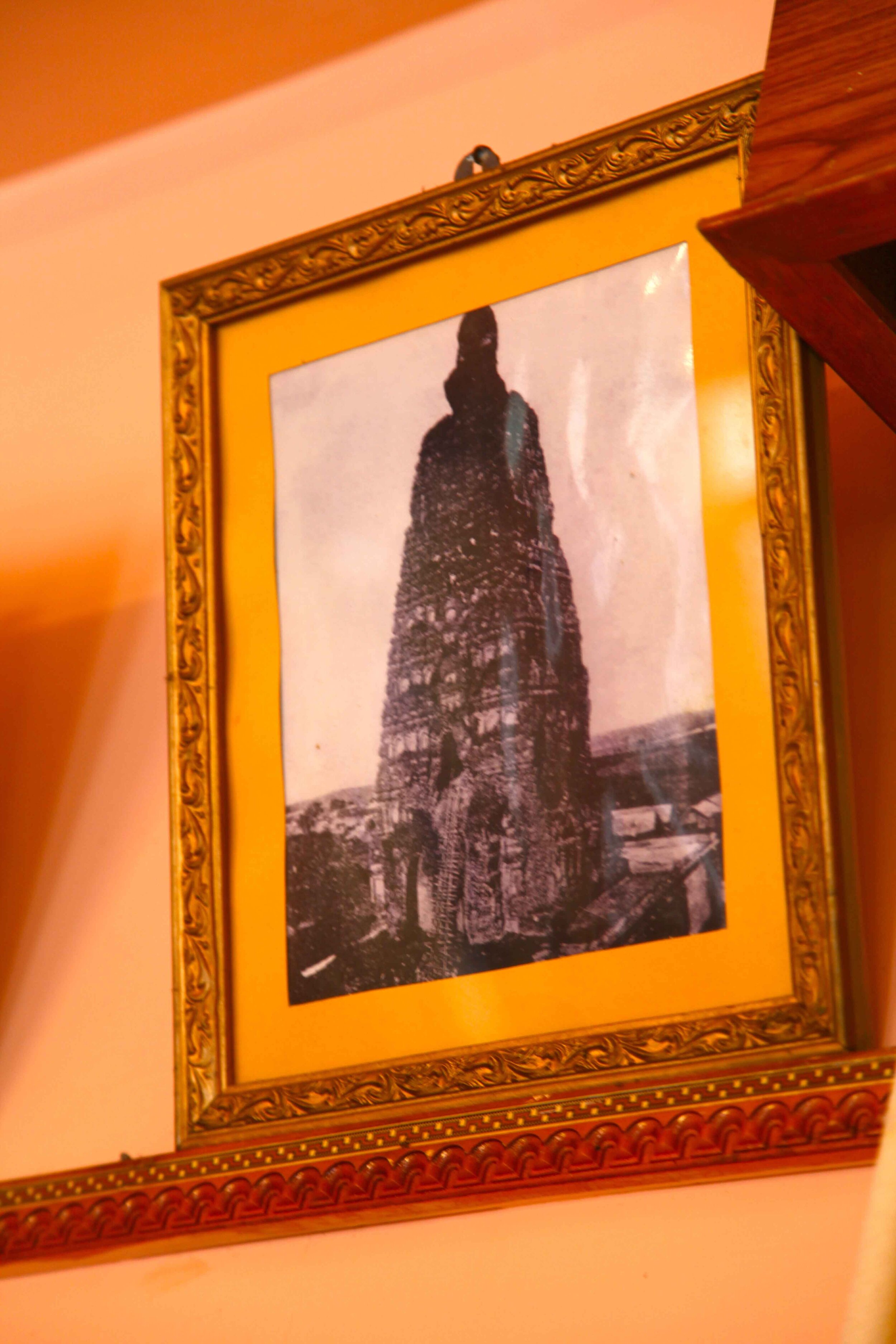

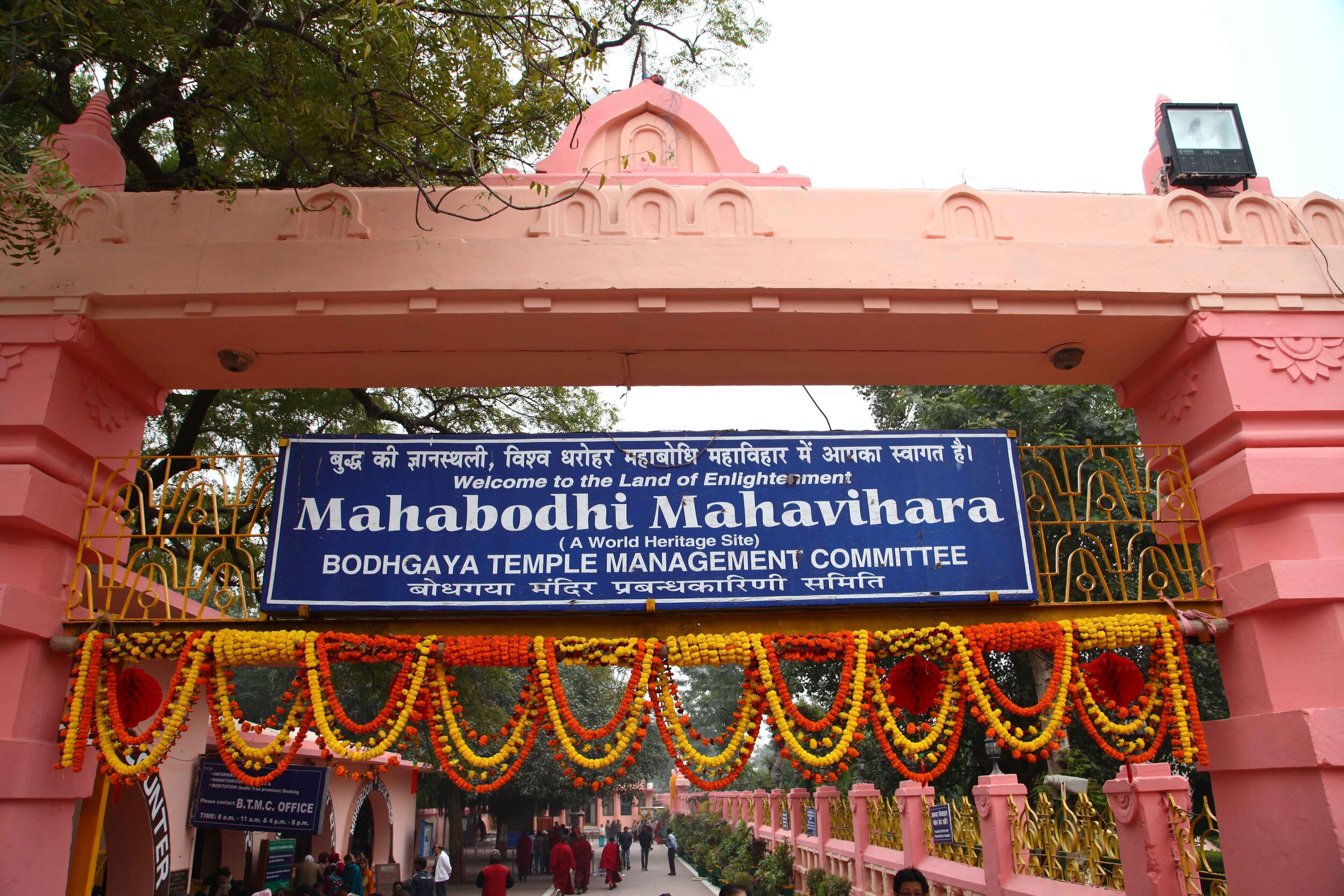
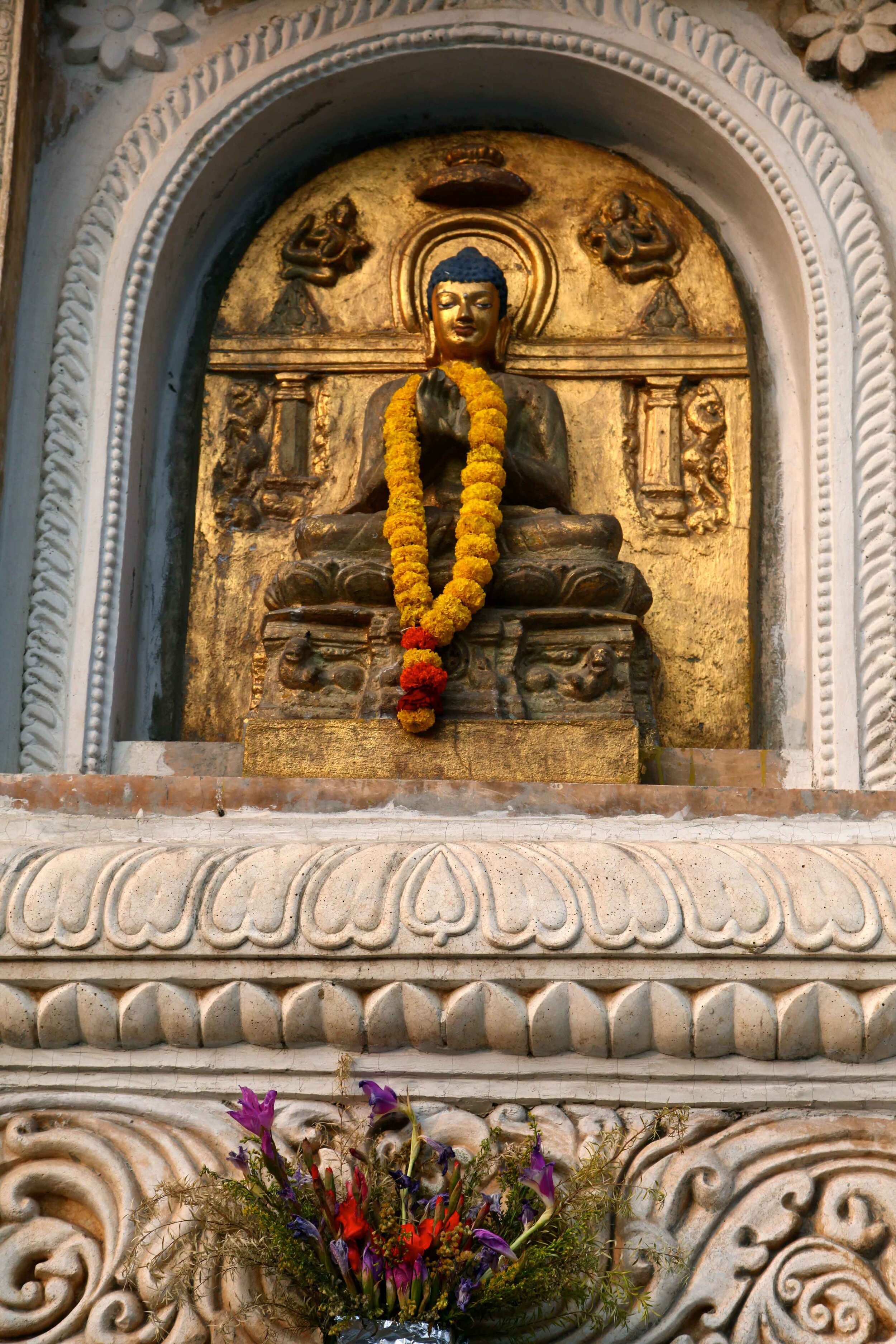
Learn more
Noble Warrior : A Life of the Buddha Compiled from the Pāli Canon
by Ṭhānissaro Bhikkhu & Khematto Bhikkhu.
This is a biography of the Buddha using passages collected exclusively from the Pāli Canon. The translated passages are interspersed with a minimum of explanation, allowing the compilers of the Canon to speak for themselves. While the passages in the Canon are not sufficient for a strictly chronological account, they do contain ample material for a thematic one that highlights the Buddha’s three main accomplishments: 1) finding the path and attaining awakening, 2) teaching that path to his contemporaries, establishing a living apprenticeship for awakening, and 3) establishing the Dhamma and Vinaya to give structure to that apprenticeship so that the True Dhamma would last for many generations.
Below are links to the particularly relevant chapters, excerpts of which have been featured above.








